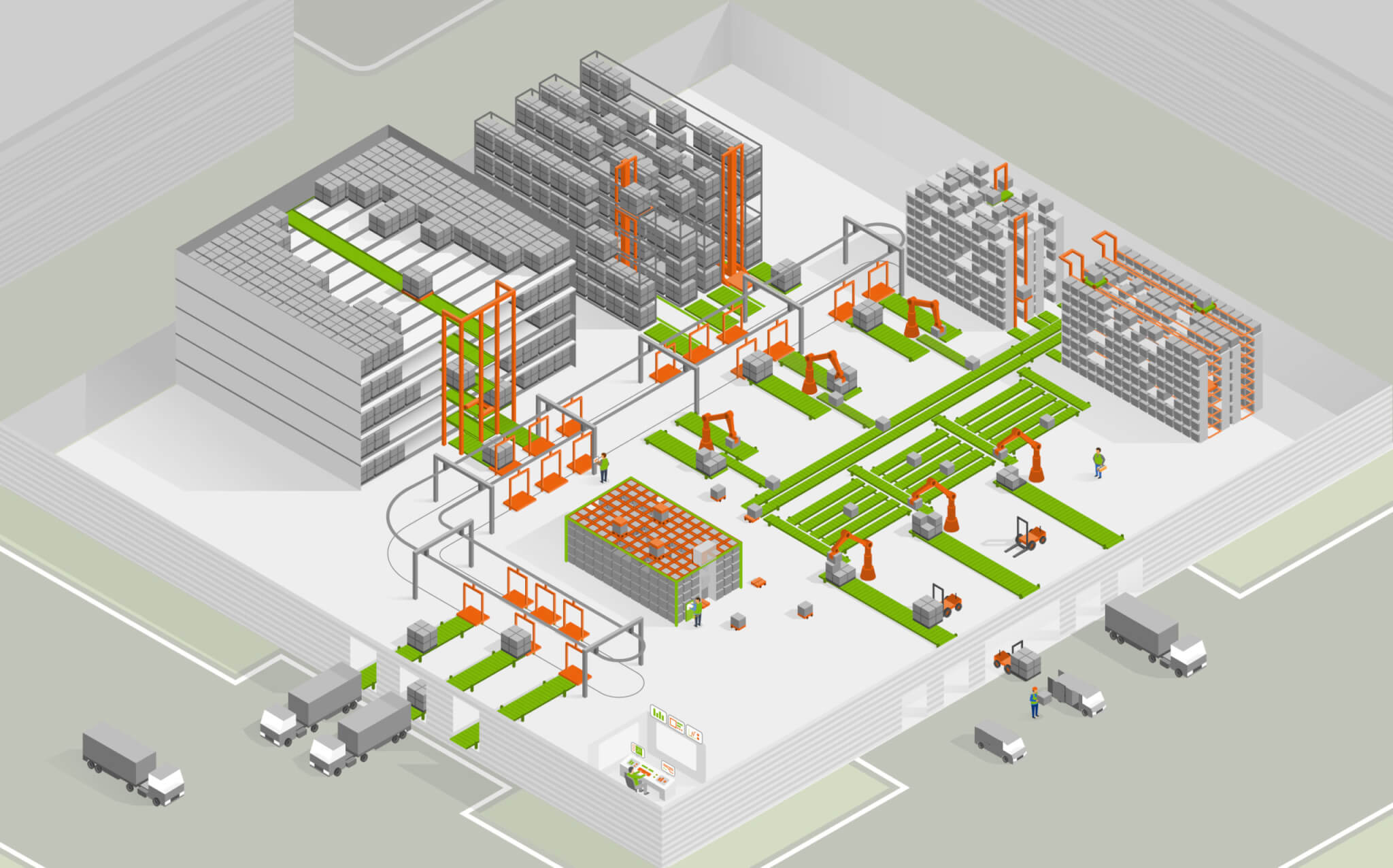The usual motivation for automation is to save operating costs and reduce the portion of human labour. However, other factors - and risks in particular - are increasingly reflected in the return on automation investments. In times of pandemics and unforeseen geopolitical turmoil, companies perceive automation and robotics as instruments to reduce or eliminate risks critical to their “business continuity”. Nevertheless, the evolution of the global economy entails a number of new challenges that make large investments more complicated and costly. Industrial inflation, lack of supplier capacity, unavailability of key materials and components – all these include the influences that must be carefully considered when investing in automation.
1. Examine and change existing processes
In the initial stage of automation projects, it is crucial to analyse your existing processes well and obtain a good overview of the state of your logistics. Based on the data collected, you can reveal inefficiencies that need to be eliminated in the future state and identify which processes or structures can be optimised. Automation may not always be necessary or the best solution for a respective area. It is good to be prepared for it, and if a particular project does not prove to bring clear benefits, we recommend postponing it for a more appropriate time or giving it up entirely.
2. Elaborate a thorough business case
It is a good idea to embark on automation if a well-developed “business case” demonstrates the benefits and return on investment. The business case must calculate all capital/investment expenditure items (CAPEX), operating expenditure (OPEX) and the financially valuated risks and opportunities of the investment project. The acquisition of the technology itself may account for only about a half of the CAPEX. The remainder usually consists of associated expenses such as construction project readiness (including fire safety), construction costs themselves, process readiness, IT systems, infrastructure and integration, consultancy and advisory costs, etc. In the OPEX area, significant items comprise maintenance and renewal of technology (especially over a longer period of time). It is also worth taking into account the expenses related to dealing with the transition period during construction. Project preparation should include developing a clear assignment for potential contractors and the setting of evaluation criteria, with price not being the main parameter for decision.
3. Do not neglect the human factor and proper communication
Automation projects are often long-term and require a strong project manager and their full-time commitment. It is also important that all departments of the company that will be directly affected by the automation are involved in the project in the preparatory stages. After all, proper internal communication within the company is an important prerequisite for the smooth progress of the project. If the entire team is not properly briefed on the project, its implementation could be slowed down and some team members could even block the process for various reasons, leading to delays and additional costs.
Particularly in smaller companies, it is common to outsource certain positions dedicated to automation projects as the required experts are often not members of the standard team of employees or the current employees do not have sufficient capacity for the project. Another option is to look for suitable new staff early on.
However, starting an automated warehouse will not render you any relief. Although the activities are slowly coming to an end for the project (or run-up) team, their agenda needs to be handed over to the operations team who will manage the warehouse in normal operations. Do not underestimate the handover of activities and proper training of the operators so that a knowledge gap does not arise.
An entirely separate chapter is maintenance, which involves selecting the right maintenance scheme (full-service supplier or using your own resources), providing a first set of equipment or possibly stocking spare parts.
4. Work with future scenarios
Automation is often demanding in terms of initial investment – this might be an apparent matter of facts. For this reason, it is appropriate to prepare future projections in the feasibility study with an emphasis on growth over time, or requirements for future storage capacity or another key indicator, e.g. the required warehouse flow, and to prepare the project in several corresponding stages. The aim of this part of the feasibility study is to examine the scalability of the warehouse, including automated technology, and to define the assumptions that must be met. In other words, the aim is to build a warehouse with a certain capacity (or flow) in the first stage, with possible expansion of the warehouse in the next stage. This will ensure that you create a warehouse matching the exact needs – without unnecessarily large reserves for the future state – and that the investment is spread over multiple milestones.
5. Do not underestimate risk management
Every project entails its own risks. It is necessary to work with these risks throughout the project: to name them, analyse them and prepare adequate measures (mitigation). In addition to the project risks, we must also consider potential operational technological risks – even automated technology cannot be expected to be fully functional and “downtime-free”. As with conventional technology, reliability and readiness are not 100% with automation, and failures must be taken into account. In addition to the technology itself, packaging, its design, quality and standardisation of packaging pose a major risk – robots will not stop due to a failure, but more often as a consequence of a poorly packed and collapsed pallet. Depending on how critical the equipment itself is to the company’s follow-up processes, it is essential to develop standby concepts that ensure operations are maintained, help minimise potential damage in the event of adverse developments, and speed up a return to the normal state. Test operations must be an integral part of the whole project, and it is certainly not worth saving time on them. The automation launch itself is usually power-scaled to ensure a smooth run-up to the actual live operation.
6. Get ready for comprehensive solutions
When developing automation technology, it is necessary to focus on processes that precede and follow automation. Often it is necessary not only to involve other departments in the company, but also to get their suppliers to cooperate. For example, agreeing with the supplier to change the packaging or labelling of goods/materials (labels) so that they can be processed easily by automated technology and without any modification.
With the launch of an automated warehouse, there is also increased administration for the company, especially in terms of internal documentation. These include documents such as warehouse operating rules, work instructions, packaging regulations, etc.
7. Start in time
Automation projects should not be driven only by the feeling that automation is trendy nowadays. It is important to have such projects backed by data. Unless the automation technology client runs a so-called data-driven business, which still occurs even these days, it is necessary to start tracking key indicators early and collect data that can later be analysed and used for proper project planning.
It is simply good to start the project in time. The client has to prepare the initial analysis (or the compilation of a feasibility study), defence of the budget, technical specification, the tender itself and the often time-consuming internal processes in the procurement department. Do not reckon on project implementation starting immediately after the tender evaluation – the big risks of delays are still in the contracting stage. Preparatory activities often take up to a full year, and you have not even “hit the ground running” either figuratively or literally.
Then comes the actual implementation, which can take up to eighteen months for more complex fully automated warehouse (AS/RS) projects, not including the time spent on the construction project if you are installing the AS/RS project in a newly built hall. Experience in recent years suggests that suppliers and customers underestimate the risks of price increases and time availability of supplier capacity. These influences can easily make even projects already underway more expensive by higher tens of per cent of CAPEX and increase the lead time.
The article was prepared in cooperation with Logio s.r.o.; Jan Žižka, Consultant, and Tomáš Hladík, Senior Consultant and Project Manager, are the co-authors of the text.



